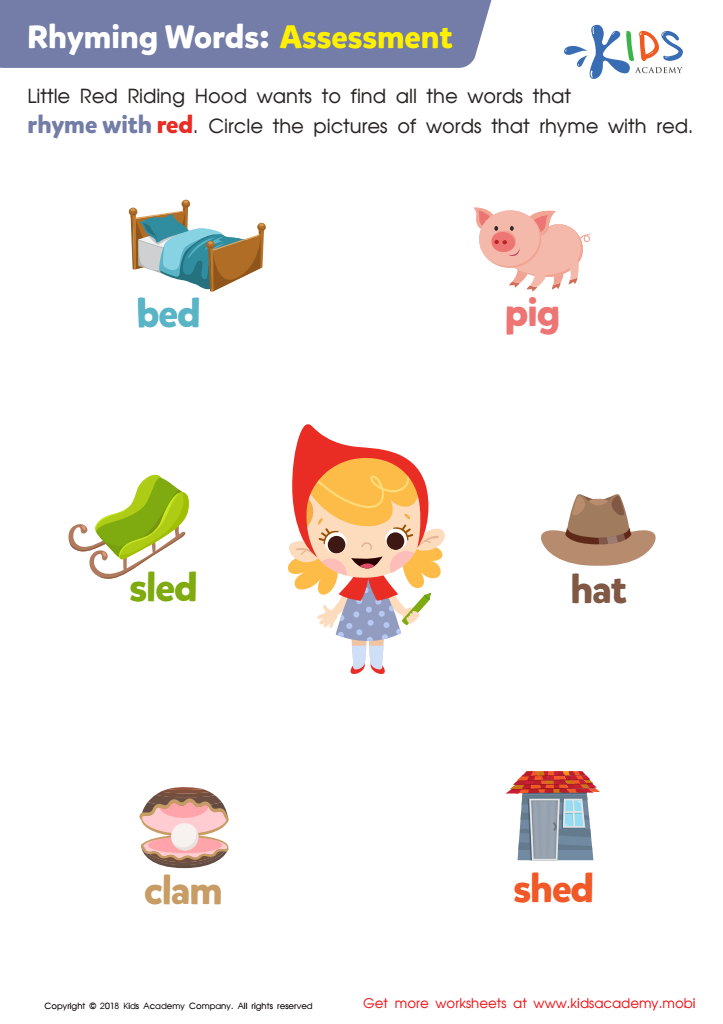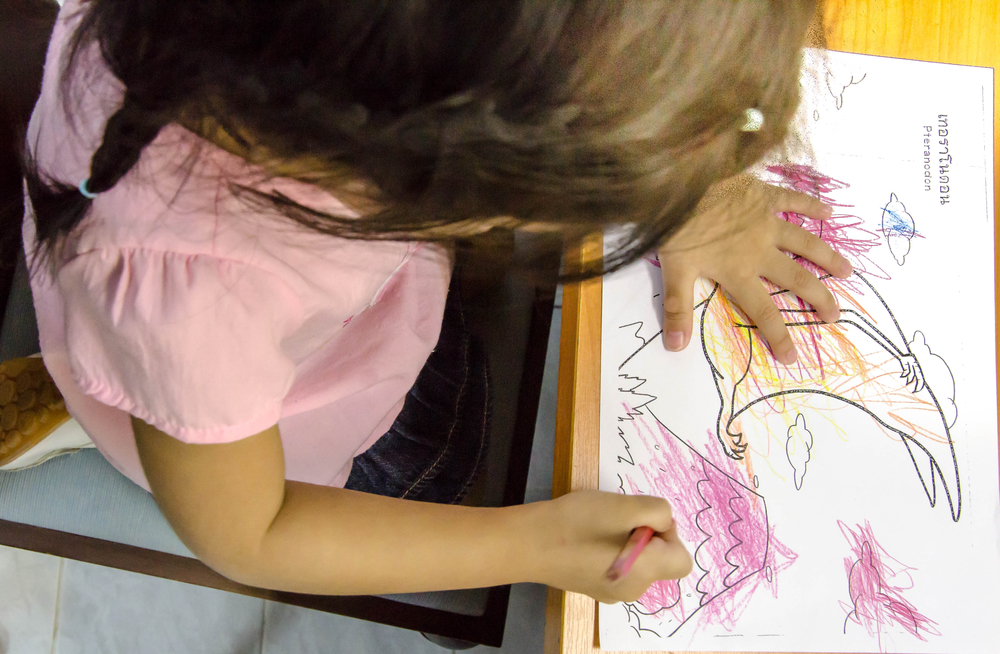Normal Rhyming worksheets activities for 5-Year-Olds
1 filtered results
-
From - To


Rhyming Words: Assessment Worksheet
Normal Rhyming worksheets activities are a fundamental tool in the learning and development of young learners, especially in the initial stages of literacy and language skills. These activities are not only engaging but also highly beneficial for several reasons.
Firstly, Normal Rhyming worksheets activities foster phonemic awareness. Phonemic awareness is the ability to hear, identify, and manipulate individual sounds—phonemes—in spoken words. By engaging in rhyming exercises, children become adept at recognizing phonetic patterns and similarities in words, an essential skill in reading readiness. This awareness forms the foundation for spelling and word recognition, crucial elements in the journey of becoming proficient readers and writers.
Secondly, these activities enhance vocabulary. As children encounter rhymes, they are exposed to a plethora of new words, often within a context that makes understanding and retention easier. This exposure not only increases their word bank but improves comprehension skills, as they learn the nuances of language and the different contexts in which words can be used.
Moreover, Normal Rhyming worksheets activities cultivate creativity and imagination. Rhyming encourages children to explore language in a playful and creative manner, often leading them to invent their own rhymes and stories. This creativity is not confined to linguistic abilities alone; it fosters imaginative thinking and problem-solving skills that are applicable across all areas of learning.
Additionally, such activities provide an opportunity for social interaction and cooperative learning. Children delight in sharing rhymes, working together to come up with rhyming words, and engaging in activities that require teamwork. This not only enhances their social and emotional skills but also encourages a love for learning and language.
In conclusion, Normal Rhyming worksheets activities are an indispensable tool in the educational toolkit. They lay a strong foundation for phonemic awareness, vocabulary expansion, creativity, and social interaction, making them essential for the linguistic and cognitive development of young learners.

 Assign to the classroom
Assign to the classroom





.jpg)






